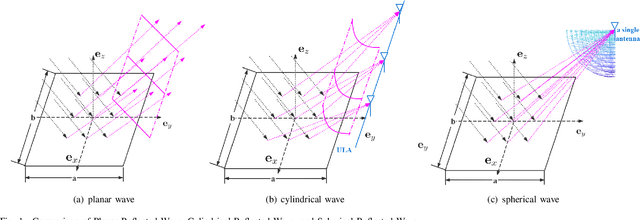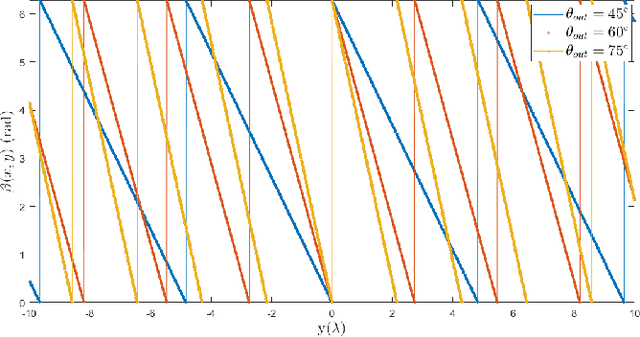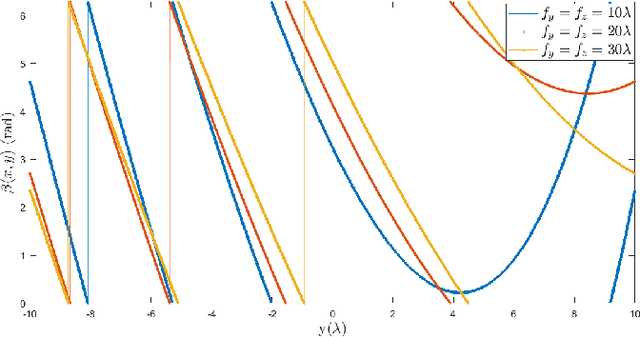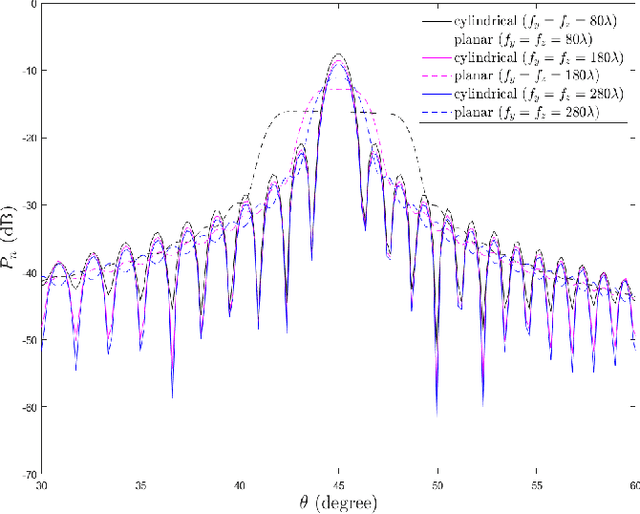Reconfigurable Intelligent Surface for Near Field Communications: Beamforming and Sensing
Paper and Code
Apr 21, 2022



Reconfigurable intelligent surface (RIS) can improve the communications between a source and a destination. The surface contains metamaterial that is configured to reflect the incident wave from the source towards the destination, especially when there is a blockage in between. Recently, continuous aperture RIS is proved to have better communication performance than discrete aperture RIS and has received much attention. However, the conventional continuous aperture RIS is designed to convert the incoming planar waves into the outgoing planar waves, which is not the optimal reflecting scheme when the receiver is not a planar array and is located in the near field of the RIS. In this paper, we consider two types of receivers in the radiating near field of the RIS: (1) when the receiver is equipped with a uniform linear array (ULA), we design RIS coefficient to convert planar waves into cylindrical waves; (2) when the receiver is equipped with a single antenna, we design RIS coefficient to convert planar waves into spherical waves. Simulation results demonstrate that the proposed scheme can reduce energy leakage at the receiver and thus enhance the channel capacity compared to the conventional scheme. More interestingly, with cylindrical or spherical wave radiation, the power received by the receiver is a function of its location and attitude, which could be utilized to sense the location and the attitude of the receiver with communication signaling.
 Add to Chrome
Add to Chrome Add to Firefox
Add to Firefox Add to Edge
Add to Edge